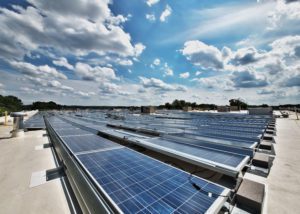IEC 60364-8-1:2019 is part of the IEC 60364 series of standards and enhances Parts 1 to 7 with the introduction of requirements and recommendations to design the electrical installation, which provides the best compromise between the required level of service and safety and the lowest electrical consumption.
It applies to new or existing installations and those under evolution and should be implemented throughout the facility’s life cycle.
The first edition of Part 8-1 of the IEC 60364 standard was released in October 2014. It has recently been updated, with a second edition released in February 2019.
What’s new in the 2019 Edition of the Standard?
IEC 60364-8-1:2019 gives requirements and recommendations for designing an electrical installation with an energy efficiency approach. This emphasizes the importance of Energy Efficiency in designing electrical installations in the same way as safety and implementation rules.
In the manufacturing industry, Energy Efficiency can easily be defined by the quantity of energy (kWh) necessary to manufacture one product. For an electrical installation in a building particularly, Energy Efficiency is defined as a system approach whose objective is to optimize electricity use. This includes:
- Minimize energy losses,
- Use electricity at the right time and at a lower cost,
- Maintain the performance all along the installation life cycle.

Examples for energy efficiency classes
Similar to the popular grading of consumer goods, the objective of the IEC 60364-8-1 standard is to define the efficiency classes for a building’s electrical installation based on their level of efficiency.
The standard defines 6 classes, from EE0 to EE5.
- EE0 is given for buildings with the lowest efficiency
- EE5 is given for the best efficiency.
The classification depends on the building: the energy efficiency class will be based on a given total number of points resulting from the assessment and whether the building is used for residential, industrial, commercial, or infrastructure purposes.
A Normative methodology to assess the energy efficiency classes of a building.
The standard states 23 parameters to be evaluated, amongst 5 categories of possible energy efficiency improvements.
- Category #1: Initial Installation
- Category #2: Energy Management
- Category #3: Performance Maintenance
- Category #4: Power Monitoring
- Category #5: Bonus
Each assessed parameter receives points according to its scoring grid.

Ready to implement?
Here are the main points to keep in mind while implementing the Energy Efficiency approach in an electrical installation:
- There must be no conflict with the requirements relative to the safety of people and property,
- There must be no deterioration of electrical energy availability,
- It applies to new and existing installations,
- It can be implemented anytime, the only point of consideration being the rhythm of investment,
- This is an iterative approach, and improvements can be incremental. The ROI is the deciding factor for implementing new equipment dedicated to Energy Efficiency.
Technical guidance is provided on the design principles, taking into account the following aspects:
- Optimal location of the HV/LV substation and switchboard by using the barycenter method
- Reduction of the wiring losses, by increasing the cross-section area of cables and by the implementation of Power Factor Correction and Harmonic mitigation,
- Determination of meshes or zones with equipment having similar energy requirements,
- Load management techniques,
- Installation of control, metering, and monitoring equipment.
A Normative area for improvement of the energy efficiency class
Throughout the IEC 60364-8-1:2019 standard, best practices to improve the energy efficiency of electrical installations are presented.
Assessing the energy efficiency class using Annex B’s content also helps understand which energy efficiency-related parameters should be improved first and which measures should be adopted to improve the grade of these parameters.
For more detailed guidance on the new IEC 60364-8-1:2019, along with other IEC standards, you can:
- Connect to the recently updated K chapter on Energy efficiency Electrical installation of the Electrical Installation Wiki 2020.
- Register to download the recent White Paper “Designing electrical systems for future-proof, energy-efficient green buildings.”
Download the recent IEC Advisory Committee on Energy Efficiency case study on low-voltage electrical installations.
Editor’s Note: This post was originally published on September 22, 2015 and has been recently updated for accuracy and comprehensiveness.



